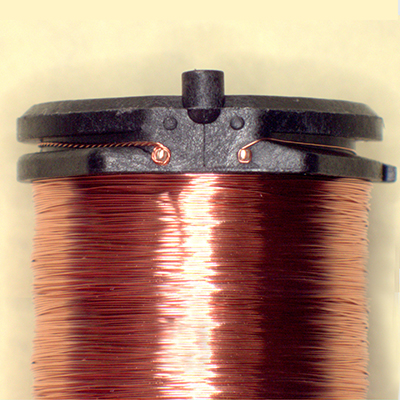Coil Assemblies
Deltrol Controls has been manufacturing encapsulated coils for over 40 years. Most of our standard solenoid, valve, coil, and relay products utilize encapsulated coils. Additionally, Deltrol Controls designs and manufactures a variety of custom encapsulated coils for specific customer applications. Please contact Deltrol Controls to discuss your specific application.
Some key features of our coil design and manufacturing processes are:
Insulation Systems
Deltrol Controls manufactures coils with UL class A, B, F, & H insulation systems. Depending on your requirements, we will help determine the most appropriate system for your application. The temperature limitations for each system are as follows:
UL 1446 Systems of Insulating Materials
- Class A - 105º C
- Class B - 130º C
- Class F - 155º C (IEC 60085)
- Class H - 180º C
Water ingress protection
Some applications expose coils to water that can wick into the coil through the seams between the encapsulation and bobbin. This ingression of water can cause wire corrosion and turn to turn shorts that can cause premature failure. Deltrol Controls offers multiple levels of water ingress protection for coil designs.
- Standard encapsulation – No provision made for resistance to water ingression. While the plastic encapsulation surrounding the coil provides some protection from ingression, water can easily penetrate the coil and cause failure.
- Vacuum impregnated coils – This process involves placing encapsulated coils into a vacuum chamber to draw liquid resin into the seams of the coils. After the liquid resin cures, the seams of the coils are filled and resist moisture ingression. This process results in coils that can achieve a IP-67 rating.
- Flange to encapsulation bond – This process relies on utilizing bobbin flange designs that re-melt into the encapsulation material during the encapsulation process. The re-melting results in good adhesion between the bobbin and encapsulant that provides excellent water ingress protection. This process results in coils that can achieve a IP-69 rating.
- Seamless coils – This process results in no seams between the coil and the bobbin and provides the ultimate in water ingress protection. A sealed connection must be used when connecting power to the coil to prevent water ingression in this area.
Meeting Glow Wire or Hot Wire Ignition Requirements
Beginning in 2018, several Underwriter’s Laboratories (UL) standards have new requirements for insulating materials, and presently several European (IEC) standards require insulating materials to meet certain minimum requirements. One of the new UL requirements is a minimum value for Hot Wire Ignition (HWI), or to meet an End-Product Glow-Wire test or a Nichrome wire test. The IEC standards require materials meet minimum values for Glow Wire Flammability Index (GWFI) and Glow Wire Ignition (GWI). Traditional materials used in coil construction can fall short of meeting this requirement. Deltrol Controls has solutions that can pass the glow wire test requirements.
Wire SkeiningWhen fine wires are used to manufacture coils, the magnet wire to terminal connection often becomes a weak point. To combat this, Deltrol Controls skeins the ends of fine magnet wires to increase the strength of the wire at this point. This helps reduce problems associated with thermal expansion or other mechanical stresses. This picture shows a skeined wire on the left terminal and an un-skeined wire on the right. |
Surge TestingDeltrol Controls employs surge testing of coils where possible. This test can detect faults in the winding of the coil, such as turn-to-turn shorts, that could lead to premature field failure. |
CNC Winding EquipmentMost of the coils produced by Deltrol Controls are wound on computer controlled winding equipment. The winding machine will control the number of turns, wire tension, winding pitch, winding speed, skeining, sanding, and termination. This provides for consistent quality from coil to coil. |
AC Rectification
Some applications require coils that operate on AC voltage input, which can sometimes create an unacceptable level of hum. In cases where noise is objectionable, Deltrol Controls can incorporate an internal rectifier circuit to convert the AC voltage to DC. This allows the solenoid to run much quieter than a pure AC device.
Note that AC rectifiers may require protection from transient voltages. It is recommended that a metal-oxide varistor (MOV) be placed in parallel at the coil.
Electrical Terminations
Deltrol Controls can manufacture coils with a variety of termination options. Some of the more common types are:
- Spade terminals
- Lead wires (with and without connector terminations)
- Pin terminals
- DIN 43650 form A & B
- Deutsch DT04-2P
- Amp Jr.
- Metri-Pak




